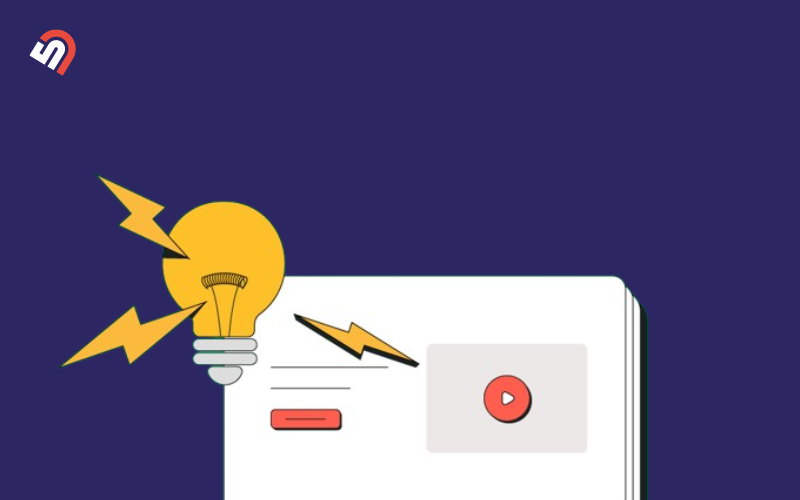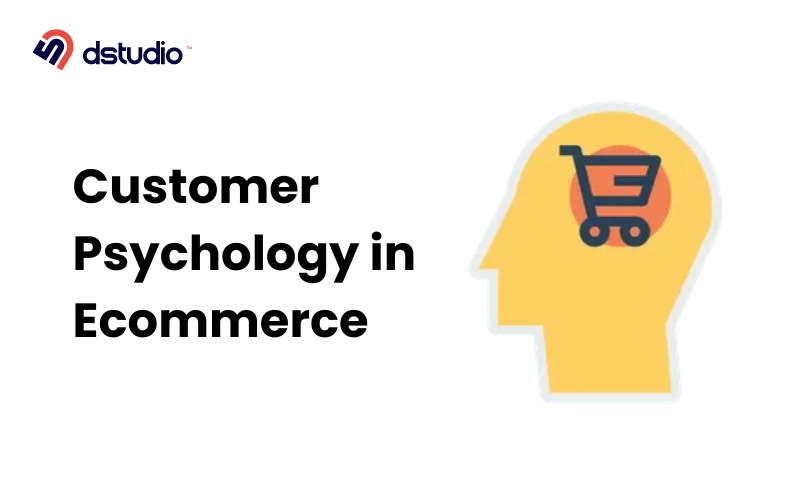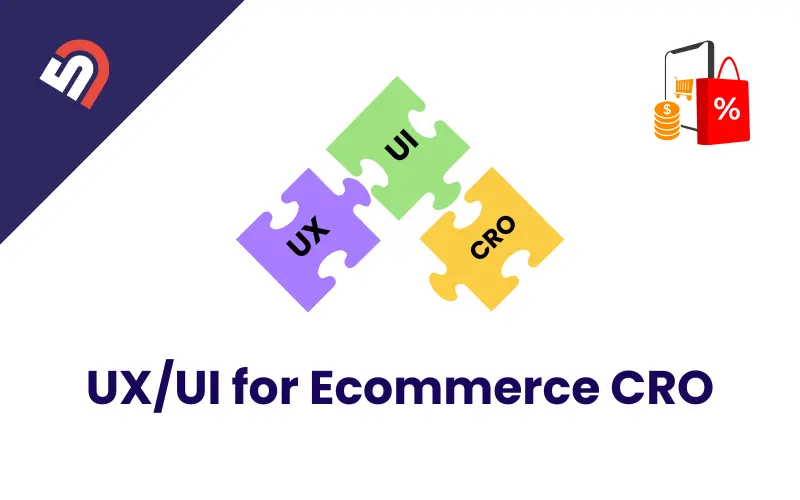E-commerce has revolutionized the way we shop and do business, making it easier than ever before to buy and sell products and services online. As with any new technology or platform, there are also common mistakes that people make when it comes to e-commerce.
From poor website design to ineffective marketing strategies, these mistakes can lead to lost sales, frustrated customers, and ultimately, a failing online business.
But don’t worry, with the right knowledge and tools, these mistakes can be easily avoided or corrected.

“Good Website + Great Consumer Experience = More Traffic”
In this article, we will explore some of the most common e-commerce mistakes and provide practical solutions to help you improve your online business and succeed in the competitive world of e-commerce.
1. Poor Website Design
Your website is the face of your eCommerce business, so it’s important that it looks professional and is easy to navigate. Poor website design can turn potential customers off and lead to high bounce rates.
To avoid this mistake, invest in a high-quality website design that is user-friendly and visually appealing.
Here are some website design tips:
1. Don’t make the homepage crowded.
2. Navigation should be straightforward.
3. Optimize product images so they don’t take ages to load.
4. Make sure descriptions are easy to understand.
5. Offer sufficient payment choices.
6. Ensure mobile compatibility.
7. Showcase customer reviews and testimonials.
8. Have crystal clear calls-to-action.
9. Give visitors the option of checking out as guests.
10. Don’t make the checkout process too difficult.
2. Unclear Product Descriptions
Vague product descriptions can be a major factor that impedes your e-commerce sales. Badly written product descriptions can cause confusion and lost sales.
Here are some typical problems with unclear product descriptions that can hurt your sales:
1. Lacking detail: A product listing should include all necessary info such as color, size, dimensions and materials. If any of these main details are not present, then possible buyers may be left with unanswered queries and may be hesitant to buy.
2. No Comparison between Products: Comparing items based on particular features is a great way to help shoppers make informed decisions about what they need and give context for pricing.
3. Not Explaining Benefits: Explaining the advantages of the product over its features is critical. Consumers want to know what’s in it for them and why they should buy it.
Clear and concise product descriptions are essential. They help the customer make informed decisions and eventually boost your sales.
3. Inadequate Product Images
Inadequate product images can have a huge effect on your e-commerce sales. That’s because visuals are a major factor to take buying decisions as they can’t physically examine the product.
Here are some of the results of inadequate product images on your e-commerce site:
- Low conversion rates: Poor images can put people off buying and leads to lower conversion rates.
- High product return rates: Customers may send back items that don’t match the images they have seen. It’s causing them high returns and loss of revenue.
- Negative reviews and decreased trust in your brand: If customers get an item that doesn’t match the pictures, they are likely to give bad reviews and stop trusting your brand.
To avoid this, make sure you have high-quality product images that accurately represents the product’s features, colors and size. Consider investing in professional photography.
4. Poor Checkout Process
Poor checkout processes can lead to poor sales, abandoned carts, and unhappy customers.
Here are some common causes of a poor checkout process:
Too many steps: Consumers like quick, easy checkouts. If your process is too complicated, customers will give up.
Hidden Charges : Be upfront about shipping or transaction fees or customers won’t purchase.
No Guest Checkout Option: Some customers don’t want to set up an account or share personal info.
Security Concerns: Customers need to know their data is safe. Certifications help build trust.
By fixing your checkout process, you can boost conversions and make customers loyal.
Pro Tip: Test & ask for customer feedback to find areas for improvement.
5. Lack of Payment Options
Don’t let a lack of payment options drive away potential customers! Give them the flexibility to choose their preferred method. Here are some popular ones to consider adding to your e-commerce site: Credit & Debit Cards, PayPal, Mobile Wallets and more.
Pro-tip: Offer multiple payment options. It can help boost sales and customer satisfaction.
6. Failure to Promote Products Effectively
Making mistakes when promoting your e-commerce products? Don’t worry, it happens. Poor promotion strategies can stop you from converting website visitors into customers.
But why? Here are some reasons:
- Not using the right marketing channels to target your audience.
- Not enough product info on your website.
- Not optimizing for search engines.
- No incentives for customers such as discounts or free shipping.
- Not leveraging social media and email marketing.
To fix this conduct market research, optimize your website and prioritize social media and email marketing. Promotions can help customers make a purchase. Investing in promotion strategies can boost sales and revenue.
7. Slow Speed

One of the key reasons customers go away from your online shop is that it takes too much time to load the page.
The study says if the page takes more than two seconds, visitors are likely to show less interest in the platform.
It’s tough out there for brands these days. Did you know that nearly half of all customers abandon a brand because of a bad experience? That’s right, a whopping 48% of people will ditch a brand if they don’t like what they see.
And it’s not just about looks either. Website performance plays a big role in customer satisfaction too. In fact, 78% of consumers won’t return to a site if they’ve had trouble with performance in the past.
8. Responsiveness
Over half of your customers will leave if your site isn’t mobile-friendly.

You should ensure that your website is responsive. Making your website responsive is the solution instead of building a mobile app.
Statistics say 39% of mobile users abandon online shopping because of difficulty entering their personal information. And that happens because of responsiveness.
9. Poor SEO
When we intend to make a purchase, our instinct leads us to Google for information. Once we enter our search query, Google presents us with a list of options. Typically, we tend to click on the first five results displayed. Hence, it becomes crucial for your business to secure a spot among those top results that we click on.
Otherwise, your website might remain lost amidst the vast expanse of the internet, and potential clients may never discover it. This is where Search Engine Optimization (SEO) comes to the rescue, helping us overcome SEO challenge. By implementing effective SEO strategies, your website can gain visibility and attract more customers, positioning your business for success in the online world.
10. Customer Service
Poor customer service is a mistake that can have a big impact on an e-commerce business. When customers don’t receive good support or help, they may feel disappointed and frustrated. This can lead to losing their trust and loyalty.
Unhappy customers might share their bad experiences with others, which can hurt the business’s reputation and make it hard to attract new customers. To succeed in e-commerce, providing excellent customer service is crucial for keeping customers happy and building a strong and positive image for the business.
11. Pop Ups
Pop-ups can be a mistake for e-commerce businesses. Pop-ups are those little boxes that suddenly appear on the screen while browsing a website. They can interrupt the customer’s experience and make them feel annoyed or frustrated. When pop-ups are overused or not relevant to what the customer is looking for, they might end up leaving the website altogether.
It’s essential to use pop-ups sparingly and thoughtfully, offering valuable information or deals to the customer, so they don’t feel bothered and stay engaged with the website.
12. Not Engaging in Social Media
Social media is a powerful tool for reaching and connecting with customers. If a business doesn’t have a presence on platforms like Facebook, Instagram, or Twitter, it misses out on opportunities to showcase products, interact with customers, and build a loyal following.
Social media allows businesses to share updates, promotions, and engage with customers in real-time, which can lead to increased brand awareness, customer trust, and ultimately, more sales. By not leveraging social media, e-commerce businesses may struggle to compete in today’s digital marketplace and lose out on valuable customer interactions and potential growth.
13. Complicated Checkout Process
Shockingly 69.80% abandon their cart after choosing products because of
- Price: 60 percent of shoppers leave the site because of the extra cost being added to the cart. Also, 21 percent of consumers abandon because of unclear price structure.
- Registration: 34 percent of your visitors abandon your site because of forcing them to register first.
- Re-submission: Another significant reason is the need to re-enter personal information or login credentials during the checkout process. This can be frustrating for customers, as it adds unnecessary steps and can lead to cart abandonment.
Solutions for E-commerce Mistakes
E-commerce mistakes can be costly, but there are solutions to help you overcome them
- By investing in website design
- Simplifying the checkout process
- Improve functionality, overall usability, and visibility.
- Optimizing for mobile devices
- Offering excellent customer service
- Improve marketing strategies to engage your consumers.
- Streamlining Product Navigation
- Providing Clear Product Descriptions and Images
- Offering Multiple Payment Options:
- Implementing Reliable Inventory Management
- Securing the Website:
- Utilizing Customer Reviews and Testimonials:
- Personalizing Customer Experience:
- Optimizing Page Loading Speed:
- Conducting A/B Testing:
- Monitoring Website Analytics:
With the right strategies in place, you can turn your e-commerce business into a thriving success.






